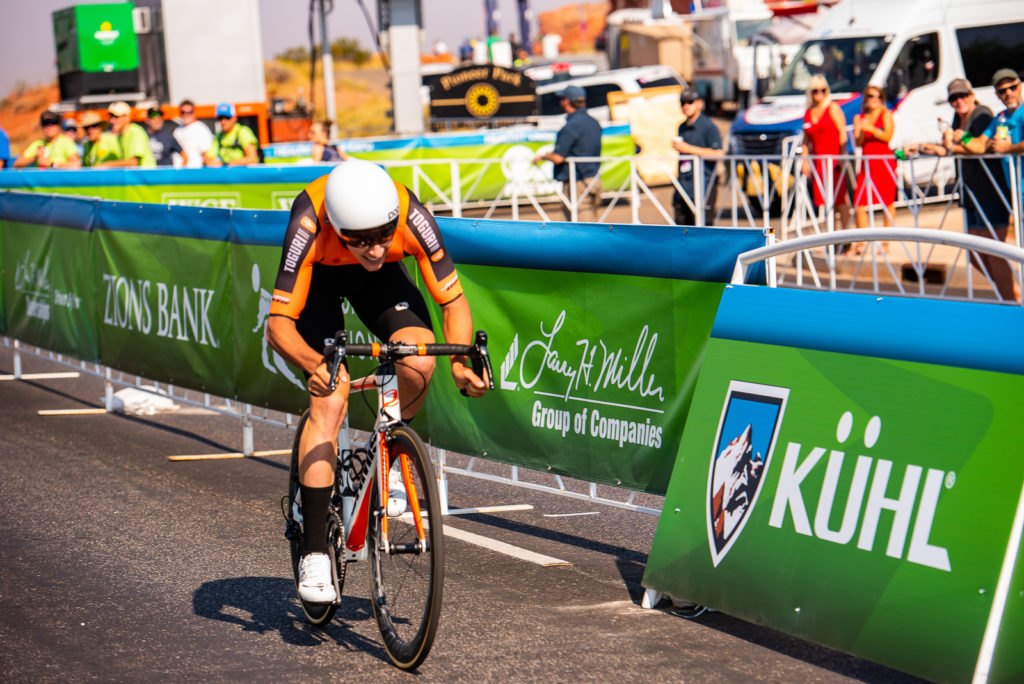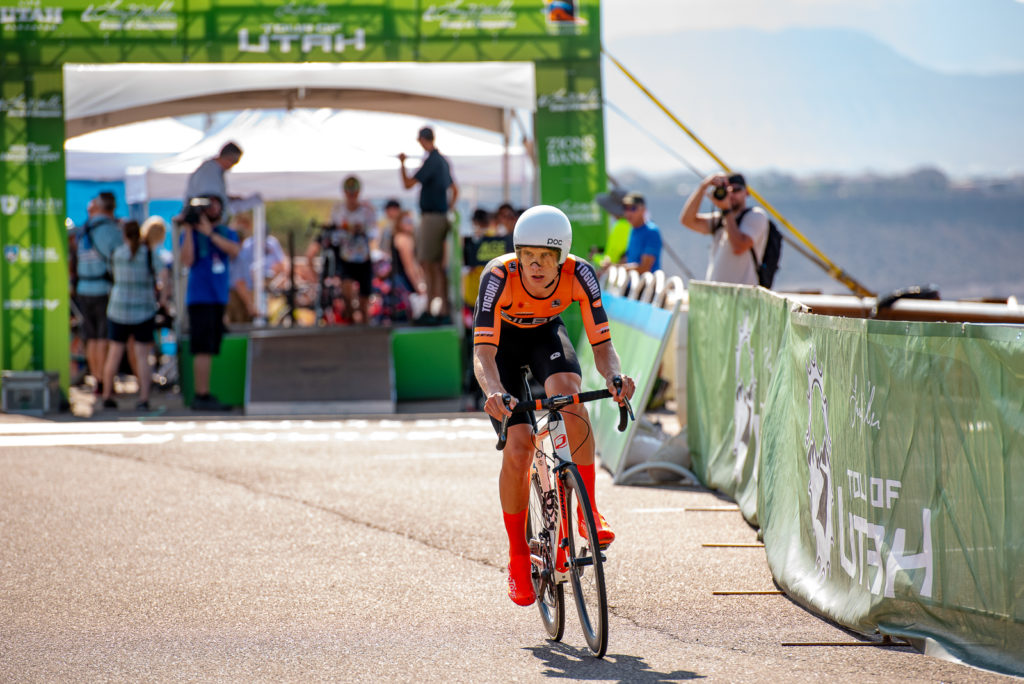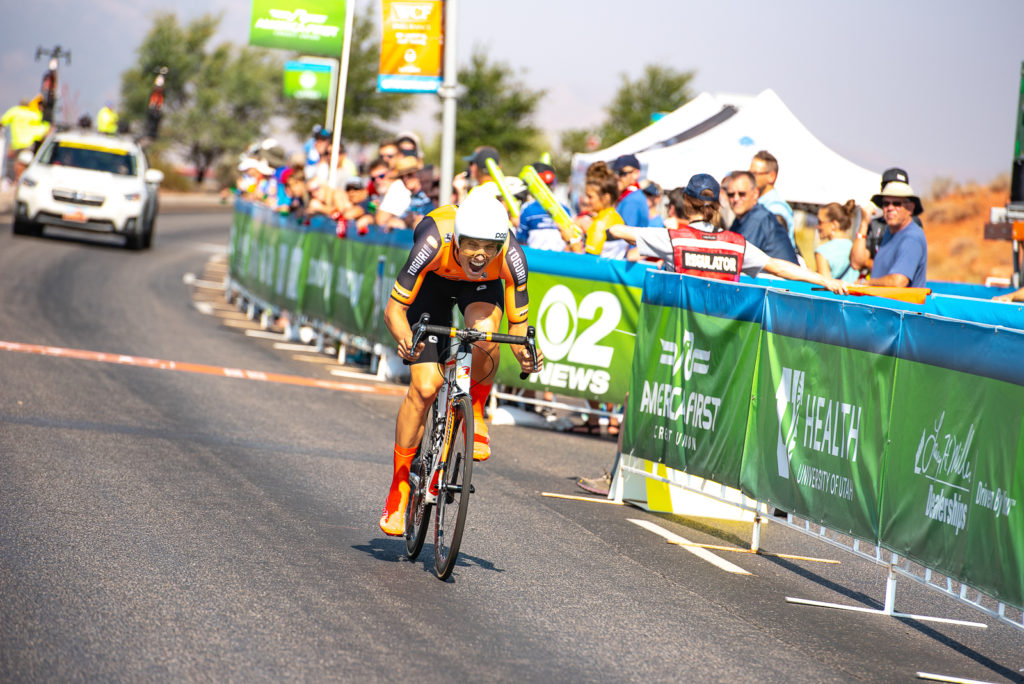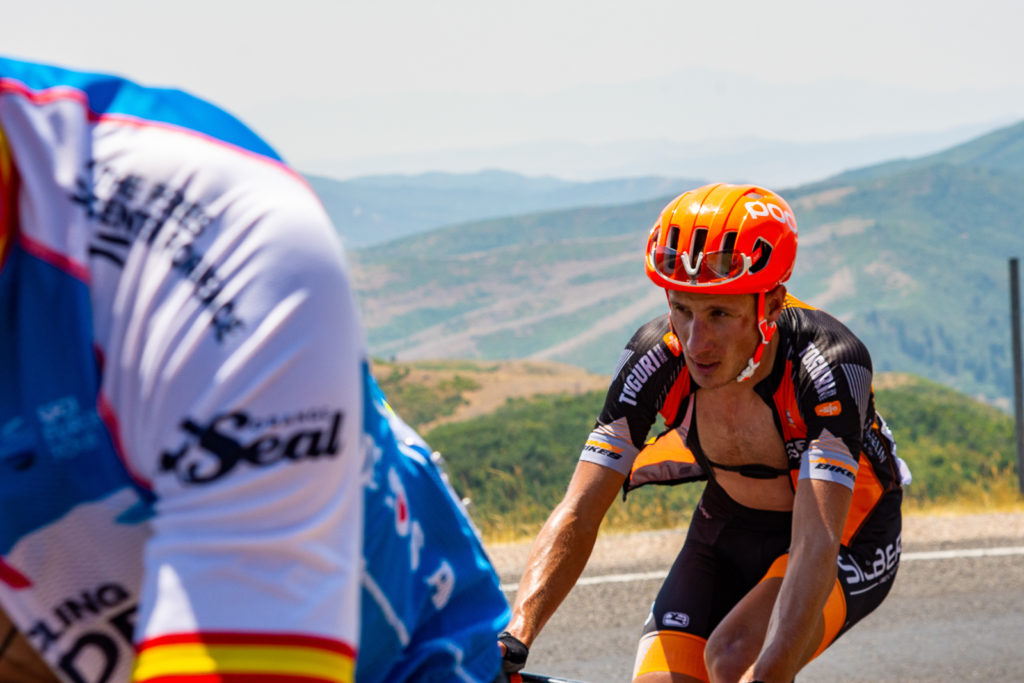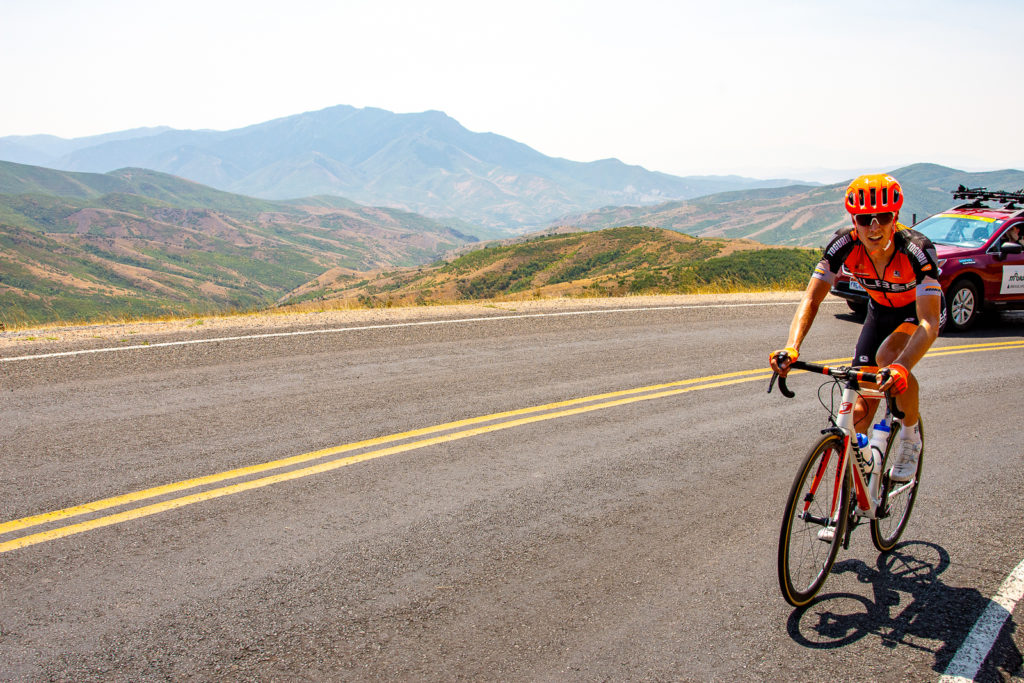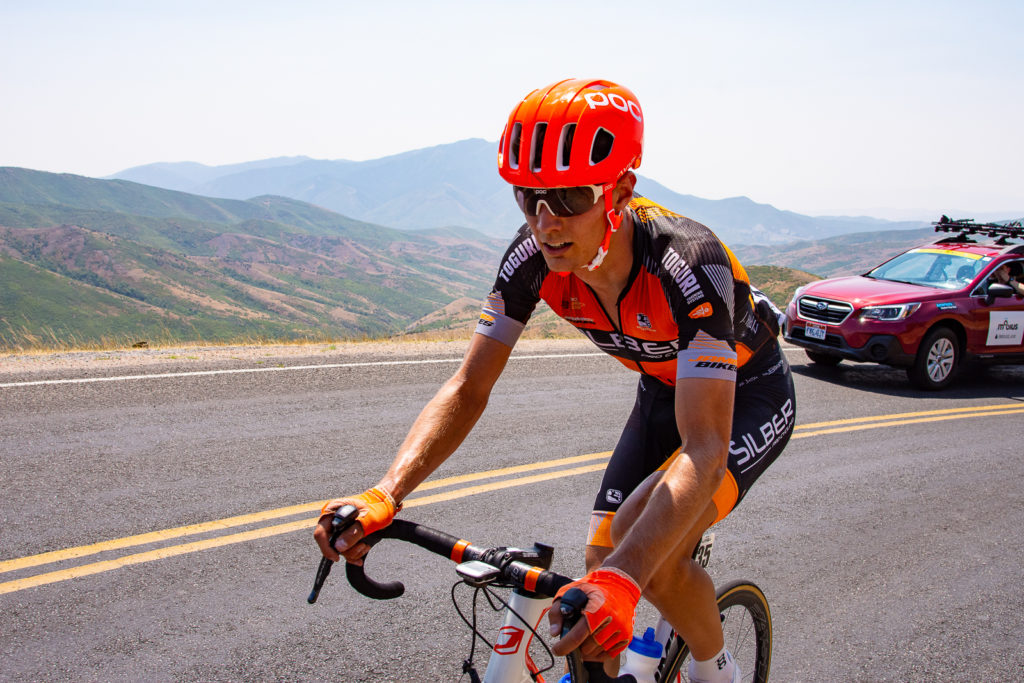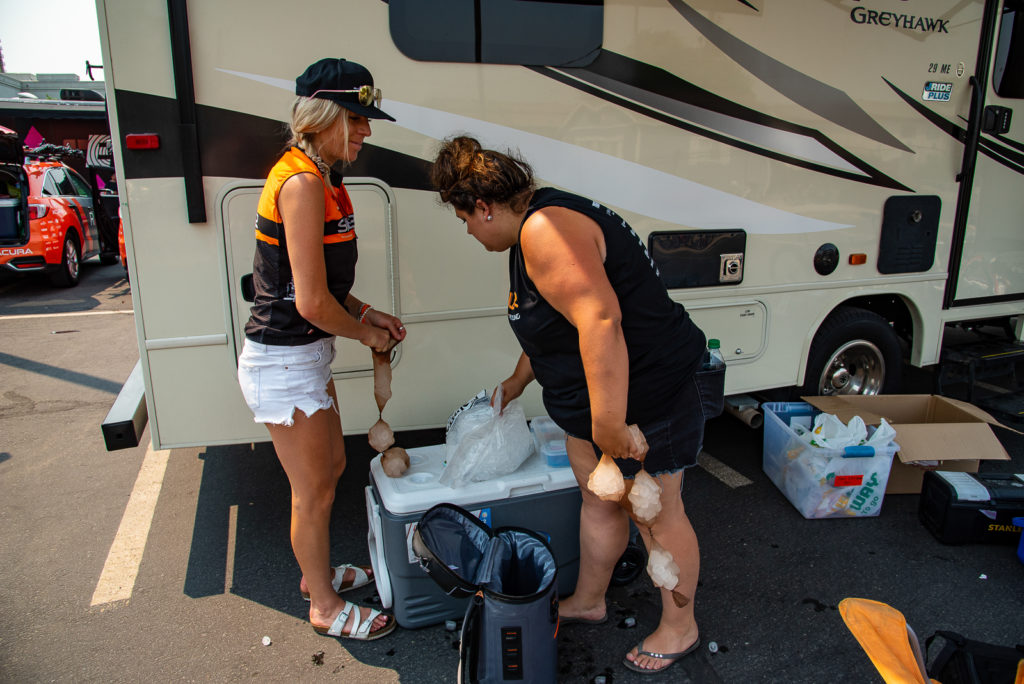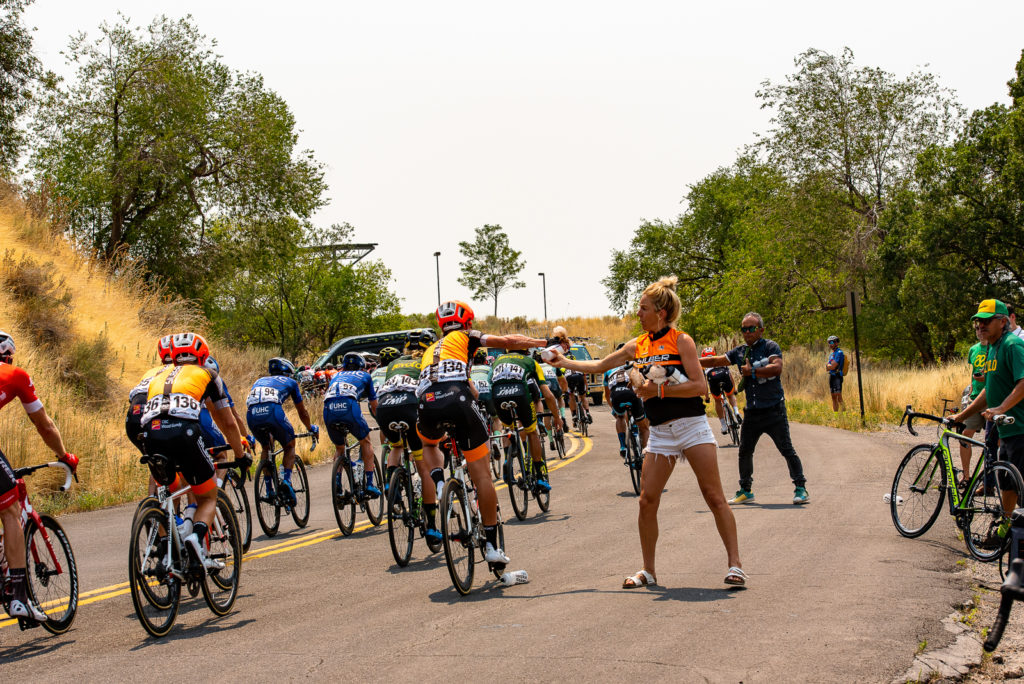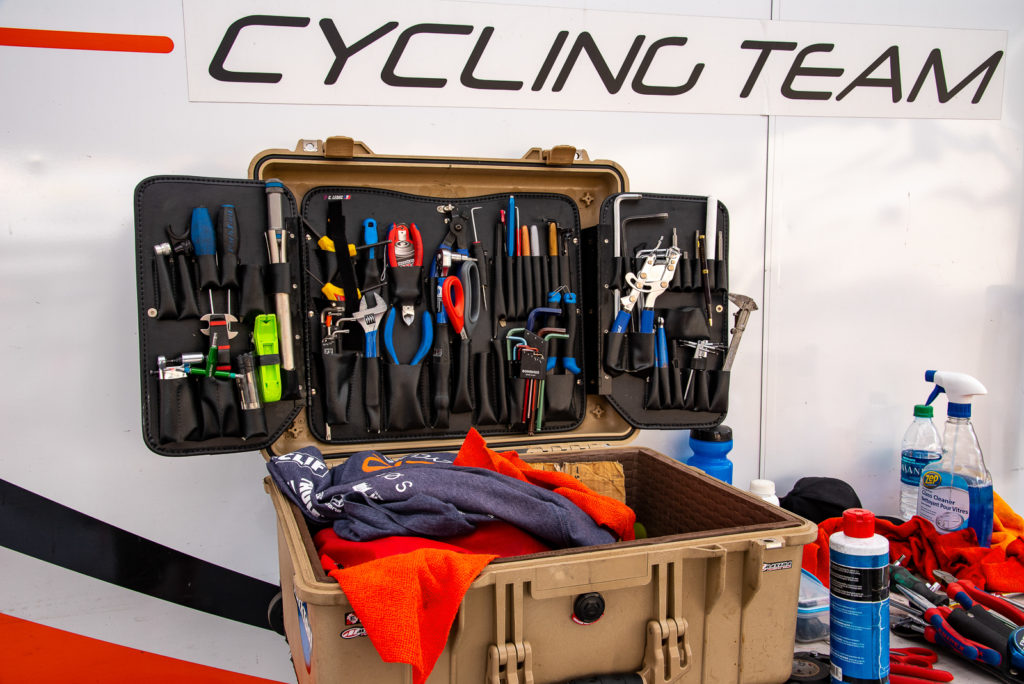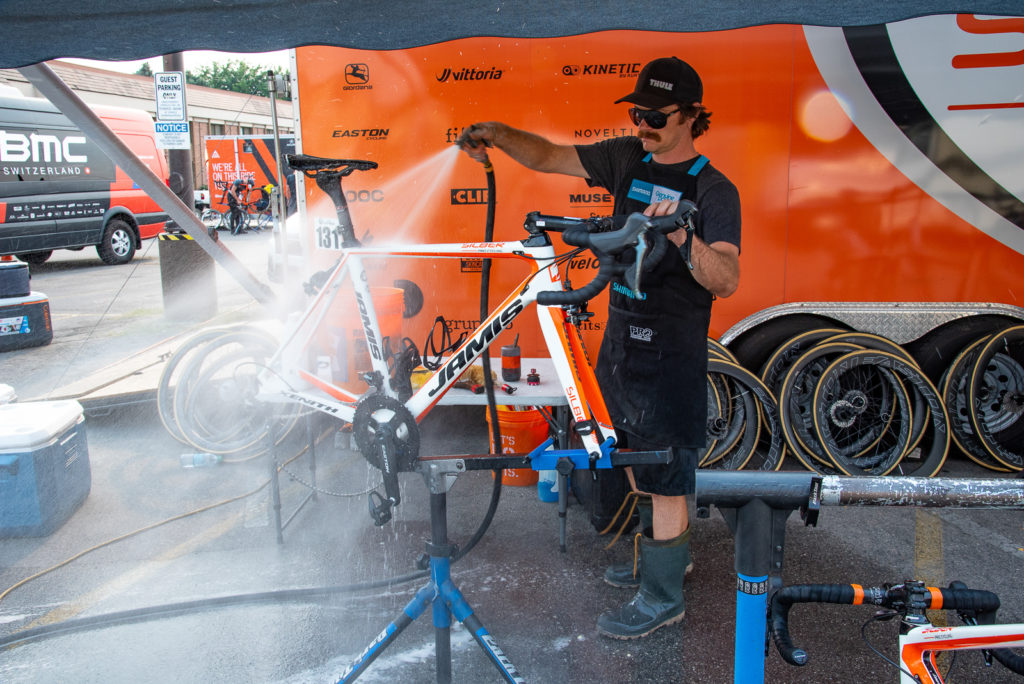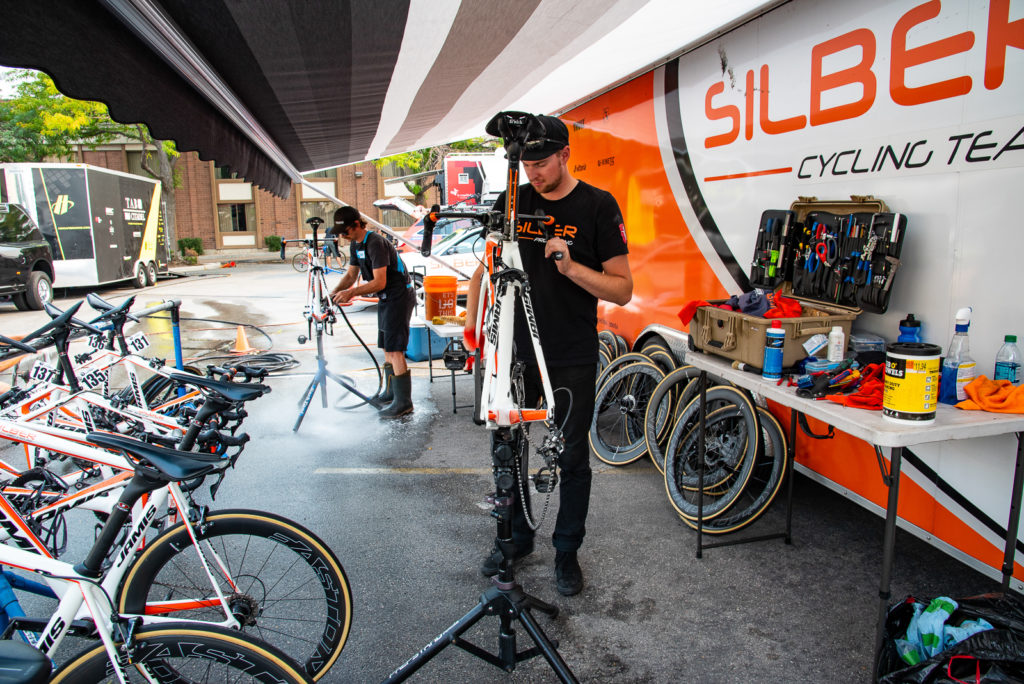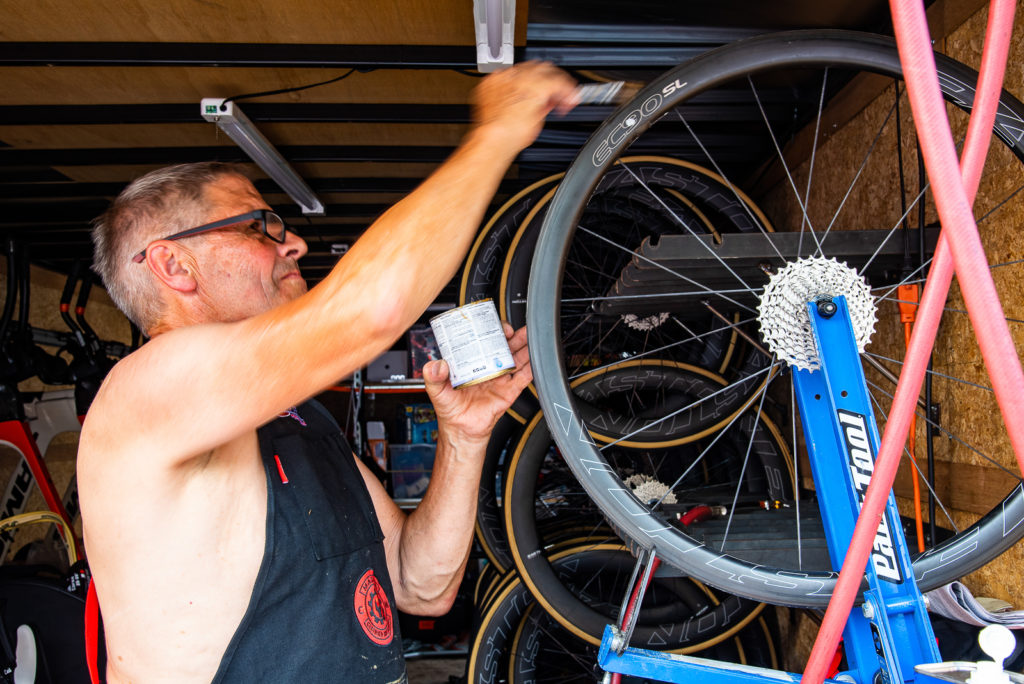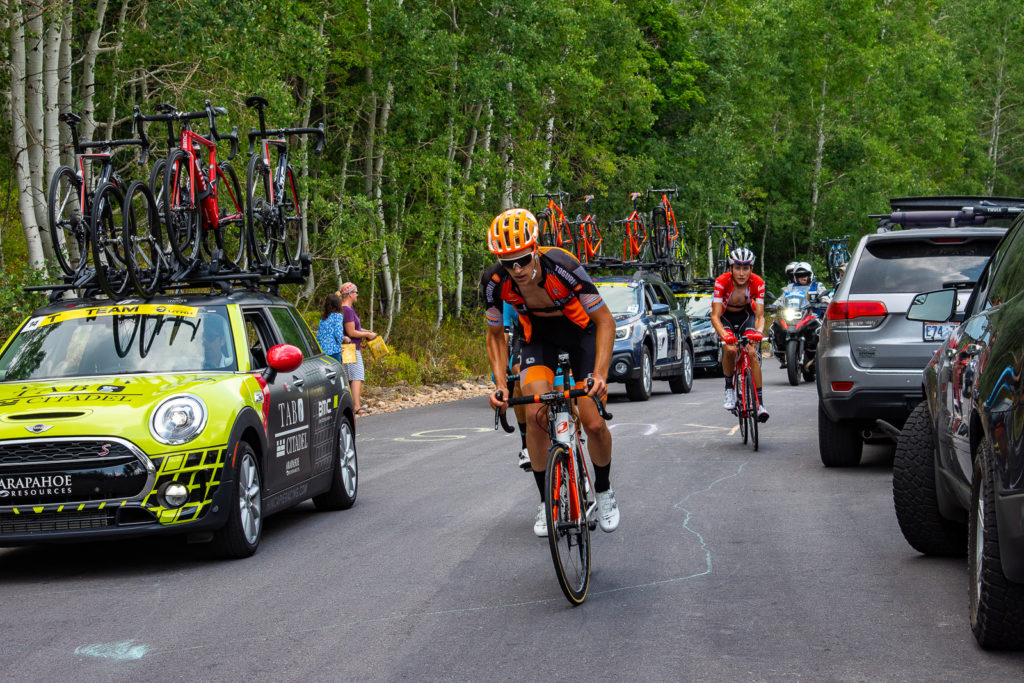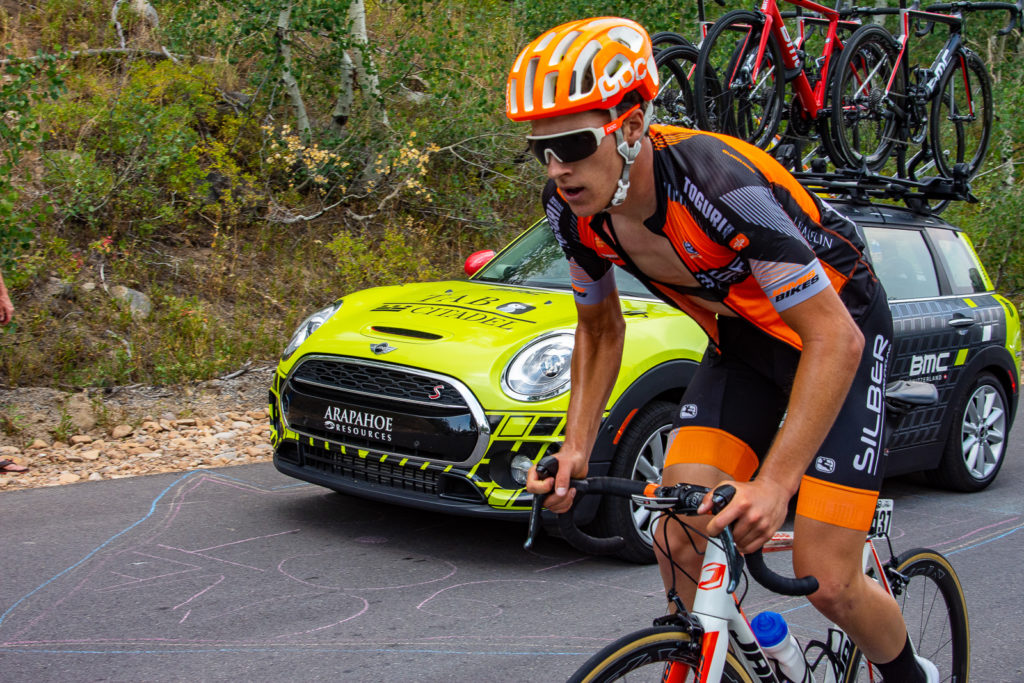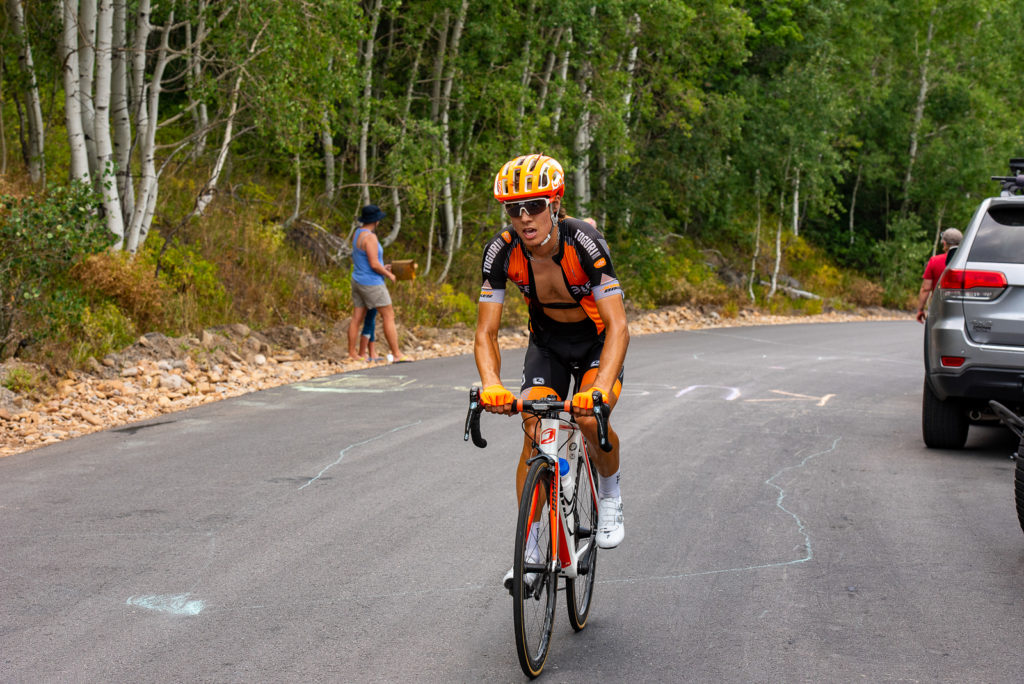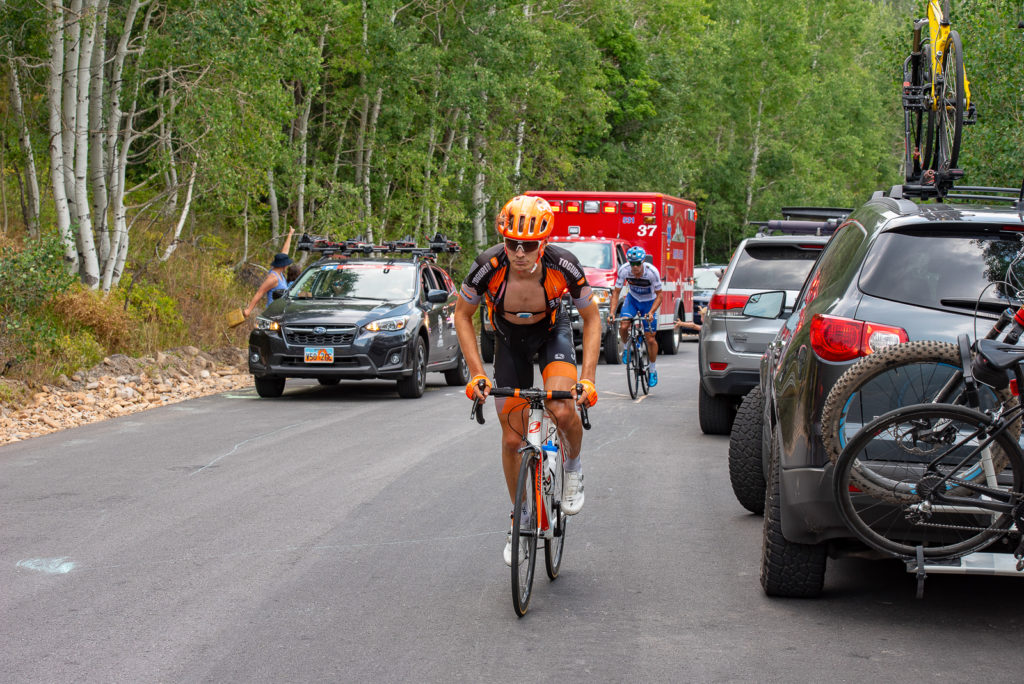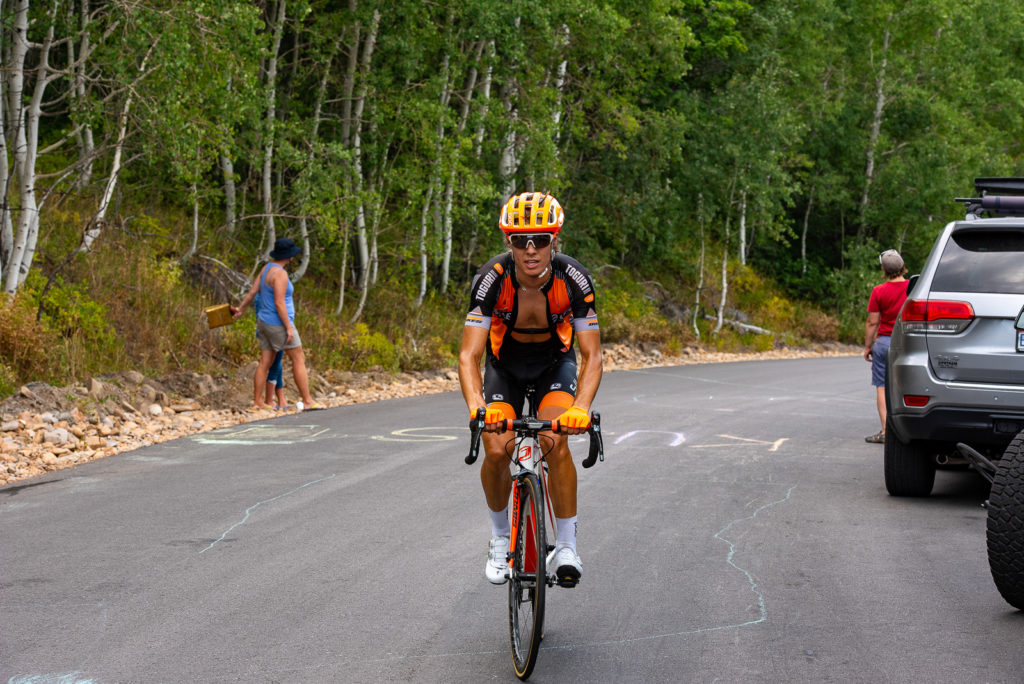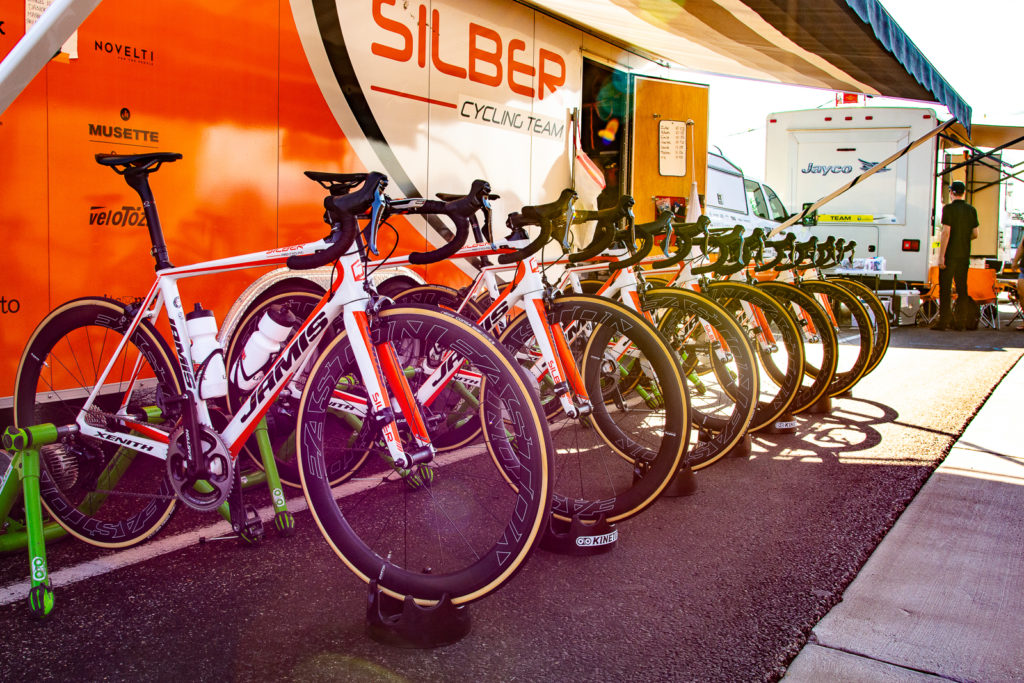
Cycling is a team sport; races may be won by individuals, but those individuals generally would not be successful without the support of a good team behind them, a team not only of riders but of support personnel as well, from the Directeurs Sportif, to the mechanics and soigneurs.
It’s really easy to see this support at the biggest races, like the Tour de France, but it is no less important at smaller events as well, like the UCI 2.1 Tour of Utah. For some of the smaller UCI Continental teams on the professional circuit, the Tour of Utah is their Tour de France.
One such team is the Silber Pro Cycling team, based in Montreal, Quebec.
For Silber, none of this could have happened without the dedicated support of Team Principal Scott McFarlane, Directeur Sportif Gord Fraser, soigneurs Emilie Roy and Caroline Lachance, and mechanics Yohan Patry, Christian Leduc, and Richard Knutson.
Like many UCI Continental teams, Silber Pro Cycling team grew out of a local team in Montreal, Quebec tied to Scott McFarlane’s Toguri Training Systems, which is where McFarlane initially met Arthur Silber, sponsor of the team for the past 5 seasons.
With Silber’s support, the Canadian squad has become one of the most successful teams on the UCI Americas Tour, and thus far has graduated 4 riders to the Pro Continental ranks, and numerous Canadian National Championships, including U23 ITT champion Adam Roberge, and National Criterium Champion Nickolas Zukowsky, both of whom are on the Tour of Utah roster.
Now, at the end of a solid 5-year run, the team has announced that Silber’s sponsorship is ending, and the team is actively searching for a new title sponsor. A good showing at the Tour of Utah would only help their chances.
Speaking before the prologue, DS Gord Fraser indicated that the Tour of Utah is not just the hardest race in North America, but that it is also one of the hardest races on the UCI calendar, behind the Grand Tours.
“We’ve got a couple of guys who are capable of a decent GC result, but the biggest thing for us is to show that we belong, and to give the guys the experience they need against world class riders if they are to make the next step.”
With U23 ITT Champion Adam Roberge turning in a very respectable prologue time trial, coming home in twentieth place, just 15 seconds behind stage winner Tejay van Garderen (BMC Racing Team), the team is off to a good start.
While the two long climbs to Cedar Breaks and Bristlecone certainly made their mark on the first road stage of the 2018 Tour of Utah, Stage 1 was actually being billed as a sprinter’s stage, and Silber’s plan for the day was to take advantage of that.
A huge part of a team’s success is dependent on the strategy for the day as set by the directeur sportif, and in Gord Fraser, the Silber team has one of Canada’s most prolific winners, with over 200 victories during his career including the 2004 Canadian National Championship, stages in numerous European races, such as the Critérium International and the GP du Midi-Libre, and a 7th place on the first stage of the 1997 Tour de France, while racing for the French La Mutuelle du Seine-et-Marne team.
The first part of the plan for the day was to stay active at the front in the early part of the stage, not necessarily to instigate a breakaway, or to make sure that one didn’t get away, but rather to try to ensure that the break was small, with just 3-4 riders, big enough to manage to stay away for most of the day, but small enough that the peloton did not feel any urgency to shut it down and were content to mostly ride tempo for the stage, and then if the stage did come down to a spring as anticipated, to help position sprinters Pier-André Côté or Emile Jean well to take advantage of the work of the larger teams
The other part of the plan for the day was to help protect GC hopeful Adam Roberge, to keep him in the running for a good overall GC position.
Unfortunately, the day’s plan didn’t’ quite come together as hoped for, with Adam Roberge the first to come off the back of the peloton shortly after the field started the first 15-mile climb through Brian Head to the summit at the entrance to Cedar Breaks National Monument, cresting at 10,453 feet. Sprinters Émile Jean and Pier-André Côté soon faded as well, while the rest of the team hung on to the lead group with 19-year old Charles-Etienne Chretian coming in a very respectable 12th place in the final sprint to the line.
With Roberge’s GC chances dashed, and three more climb-heavy stages on tap, the team’s focus shifted towards trying to infiltrate the breakaways, stage wins, and fine-tuning form for the upcoming Colorado Classic.
Meanwhile, behind the scenes, it was business as usual for the soigneurs and mechanics.
Each day, soigneurs Emilie Roy and Caroline Lachance prepare about 100 ice socks, to be distributed to each of the team cars, as well as kept in cooler in the van heading to the feed zones, to help insure that the riders can keep their core temperatures cool in the searing Utah summer heat. In addition, they also prepare about 200 bidons of water and drink mix, make sure the riders have plenty of food in their pockets to start each day’s stage.
Meanwhile, the team mechanics do final preparations on both the race bikes and backup bikes for the day, making sure that the backup bikes are properly secured to the roof of the two team cars, that tools and spare wheels are loaded into the back seat of the cars, along with coolers filled with the ice socks and bidons that the soigneurs have prepared.
At races like the Tour of Utah, Silber brings three mechanics; one for each team car, and one to transfer the team truck and trailer from the start to the finish if the race does not start and finish at the same venue.
The mechanic always sits in the right rear passenger seat for quickest and safest egress from the car when service is needed by a rider. Typically, the mechanic will have access to a portable tool chest on the rear driver’s side, and often will have the most commonly needed tools in a pouch hanging from the back of the front passenger’s seat.
Generally, in a race the size of the Tour of Utah, there will be two cars for each team. The lead car, driven by the directeur sportif, will carry most of the spare bikes with those belonging to the team leaders secured to the outside for easiest access by the mechanics should they be required mid-stage.
The second team car may carry one or two spare bikes, and if any of the team’s riders make it into the break of the day, that rider’s spare bike may be moved from the lead car to the second car, which will then move forward to cover the breakaway.
The mechanics will often be the ones responsible for listening to Radio Tour and keeping track of which riders from which teams are in the breakaway, to help keep the driver’s distractions to a minimum. On a good day for the mechanic, this will be their only duty for the duration of the race, and they can relax in the back seat, knowing that the busiest part of their day will come late in the afternoon or early evening.
While the mechanics make their final preparations in the team cars, the soigneurs take off about 5 minutes before race start to shoot ahead to the feed zone and prepare for the riders to come through a couple of hours later.
In addition to the above, Émilie and Caroline are also responsible for daily massages for each of the riders, doing all of the team’s laundry, food preparation for the riders when meals are not being provided by the race organization, as well as doing all the shopping for important items like the nylon stockings used to make the ice socks.
According to Ms. Roy, who was once a professional rider herself, the two soigneurs also act as team mothers and psychologists, whether just listening to the riders during their massages, or helping riders cope with the difficulties of being constantly on the road traveling from city-to-city to race.
While the soigneurs are busy taking care of the riders after a stage, the busiest part of the mechanics’ day is about to begin.
Silber’s three mechanics for the Tour of Utah are Canadian Yohan Patry, American Richard Knutson, and Frenchman Christian LeDuc, who after a career running and coaching junior teams in France, is now living in Quebec, and offering his experience to the young Canadian squad.
After each stage, the three mechanics set-up for cleaning and tuning each of the race bikes and spare bikes. At the Tour of Utah, Richard Knutson was tasked with washing the bikes, Christian LeDuc with cleaning team wheels and replacing tubulars if necessary, and Yohan Patry did the tune ups on the freshly cleaned bikes.
The three mechanics definitely have their system down, as it takes each man about 10-12 minutes per bike to complete each task, allowing them to complete the evening’s duties in about 2.5 to 3 hours, at which point, it’s time to kick back and relax, with a couple of ice-cold beers before the process starts anew the following morning.
